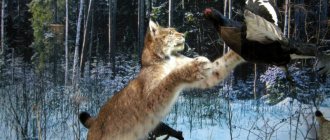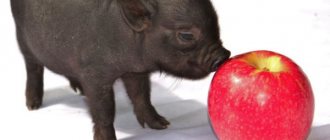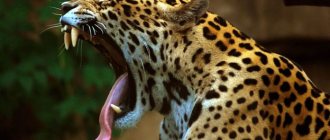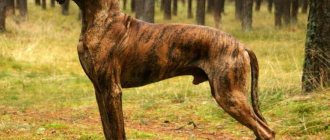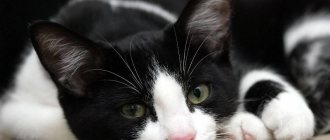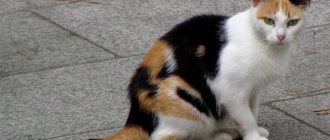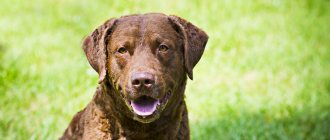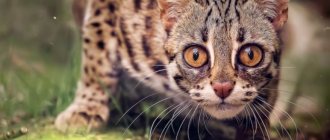- Wild animals
- >>
- Mammals
The echidna is very impressive with its appearance, since it is not immediately clear what animals it is close to. She seems to have quills, and not a hedgehog or a porcupine, she destroys anthills, but has nothing to do with anteaters. What is truly incredible is the process of reproduction and raising the young: she lays eggs, but feeds the young with milk, although not from the nipples. It also bears babies in a pouch.
She also lives on the most amazing continent - Australia. A funny thing was said about these animals: the echidna mocks scientists with its existence. Indeed, experts failed to understand much, and the echidna still arouses great interest among them. Locals also call the echidna the spiny anteater.
Origin of the species and description
Photo: Echidna
The echidna is one of the most ancient animals on our planet. She belongs to a special subclass of primordial animals. The only order here is monotremes (in another version - oviparous), which includes five species of animals. Two of them are the echidna and the proechidna of the echidna family. Three other species from the platypus family are no less interesting animals.
Echidnovae developed along a separate branch of evolution, which appeared about 180 million years ago and descended from the oldest animals on Earth - southern mammals. They found the Jurassic period and dinosaurs. Perhaps 25 million years ago, echidnas came to land from the water. They retained receptors for underwater hunting, capturing the electrical fields of moving animals. The ability to swim well on and under water has also been preserved.
The monotreme class is characterized by the excretion of the genitourinary system and intestines into one common cavity - the cloaca. This is not typical for mammals, and makes echidnas stand out among them.
The echidna has two subspecies:
- Australian;
- Tasmanian.
The main difference is in the territories occupied and the slightly larger size of the Tasmanian echidna compared to the Australian one. Sometimes the former have a larger amount of fur.
Appearance and features
Photo: Echidna animal
Echidnas are small animals. Their body weight varies from two to three kilograms to five to seven kilograms. The body length usually ranges from 30 to 50 cm, but sometimes, according to some data, it can reach 70 cm. But it is quite possible that such large sizes no longer refer to echidnas, but to proechidnas - this data is not yet completely clear systematized.
The animal has a small tail, which often looks like just a small protrusion. The head is small, narrow, pointed, smoothly blending into the body. There is a long, narrow, straight, cylindrical beak-trunk, up to 75 mm in length. There are no teeth, and the mouth opens only a few millimeters. A long sticky tongue protrudes from it, to which food sticks.
Video: Echidna
There are no auricles, however, animals have excellent hearing. The echidna's sense of smell is also very developed, but its vision is not very good. Although, according to some reports, it is written that the echidna’s eyesight is sharp, but the opinions of scientists are divided on this issue. An amazing feature of echidnas is the presence of skin in the mouth equipped with recipes - electrolocators. Modern mammals, as a rule, do not have such an ability to sense the electrical fields of surrounding animals, but the echidna has retained it.
The paws are small with five toes each; at the end the toes are equipped with powerful flat claws. There is one particularly long claw on the hind legs, with which the animal itches and gets rid of parasites. The whole body is covered with coarse hair; it is shorter on the muzzle and paws. The body is also covered with hollow needles up to six centimeters long. The color of the fur is brown, black, the needles at the roots are yellow and at the ends are black, but they can be entirely yellow.
Echidnas have very developed muscles; despite such small body sizes, they are capable of seriously turning around the objects around them. Usually she does this with anthills, but there are cases when an individual that found itself in a person’s home moved apart heavy furniture.
What kind of animal is that
This is a very unusual mammal, the offspring of which emerge from eggs. There are 2 types of echidna: spiny and woolly.
The body is covered with long needles (up to 6 cm). Their color varies from snow-white to dark brown, so the coloring is uneven. The needles are modified hair.
Source: yandex.ru
In addition to needles, there is also brown, coarse wool. The animal itself is small, no more than 40 cm in length.
His head is small and almost immediately merges with his body. The muzzle is elongated, narrowed, at the end there is a tube called a beak. This structure is due to the fact that it is more convenient for the echidna to get insects from hard-to-reach places. The mammal has no teeth at all; it catches prey with a long and sticky tongue.
Source: yandex.ru
Also, thanks to the beak, it is oriented in space, because has poor vision.
The echidna lives in Australia, New Guinea and Tasmania.
Where does the echidna live?
Photo: Red echidna
Echidnas prefer dense vegetation. Their habitat is most often forests, where they can hide in fallen branches and trees. Echidnas love to hide among the roots, in the recesses of rotten trunks and stumps. They can also occupy other people's burrows, which were once dug by hares or wombats. They can dig holes and bury themselves in them in case of danger or excessive anxiety. They spend the hottest hours of the day in such shelters, and at dusk they come out and begin their activity.
However, not only forests serve as their habitat; they also get along well in steppe landscapes and even in desert areas. They can settle near agricultural areas, but are embarrassed to go out to people. Of course, they are dependent on food, and if they have enough food, any terrain will do. Mountain echidnas are known to spend their sleepy hours among stones in small caves.
The only thing that echidnas do not tolerate well is changes in temperature; in extreme cold they become lethargic and can even hibernate. They do not have sweat glands and therefore have poor thermoregulation. Geographically, echidnas occupy the whole of Australia, and are also slightly distributed in New Guinea, Tasmania and the islands in Bass Strait.
Lifestyle
The echidna is an animal whose home range size depends on the amount of food on it. In humid forest areas, where there is usually a lot of prey, the area of territory per animal is approximately 50 hectares. During the day, the echidna usually rests, hiding under stones, tree roots and in hollows. At night, the search for insects begins, and the echidna leaves its shelter at a certain temperature. In hot weather, she comes out only at night, because she is terribly tolerant of excess heat and sunlight. In bright sunlight, the animal may even die. It can only be outside the shelter in cold weather.
The echidna doesn't have many enemies. The main danger for her is only a meeting with a person who hunts her for fat.
When in danger, an echidna can burrow into the ground surprisingly quickly, and if the soil turns out to be hard, it curls up into a ball. In winter, the echidna usually hibernates.
Echidnas have poor eyesight, but their hearing is excellent. Moreover, during night forays for food, they mainly rely on their excellent sense of smell.
What does an echidna eat?
Photo: Australian echidna
Echidnas feed on insects; it is not for nothing that one of the scientists tried to classify it as an anteater. It is ants and termites that form the basis of their diet. They easily tear apart anthills, move apart and turn over stones, and dig into the ground with their nose-trunk.
In the forest, they look for food among rotten trees, from which they can easily remove the bark with their nose or paws. There, as a rule, you can find a large number of insects. The nose helps a lot in food. They have a good sense of smell. They always look for food with its help: they can simply comb the area, tucking their trunk under mosses, fallen leaves and small branches.
Ezidnas use their sticky tongue to grab food and swallow it. At the root of the tongue there are small teeth with which the echidna grinds food. Surprisingly, they, like birds, deliberately swallow small pebbles and sand, which also later serve to grind food in the stomach. In addition to ants and termites, echidnas eat worms, slugs, small mollusks and other invertebrates.
Interesting facts about echidnas
- As you know, due to the hot and dry climate in Australia, natural fires are common. In this case, echidnas have developed a unique method of survival: at the sight of an approaching fire, these animals do not flee, but find a hollow in a tree or burrow into the ground and fall into suspended animation! As soon as the first insects appear at the site of a natural disaster, the animals emerge from hibernation and return to their normal lives. One can only wonder how echidnas adapted to Australian realities and learned to withstand fires.
- Males have a bizarre penis with four heads. During mating, two heads close while the other two become larger to fit into the female's two-branched reproductive tract.
- Echidnas form so-called “mating trains.” A strange process marks the beginning of the breeding season. At this time, up to a dozen males line up nose to tail behind one female - from the outside it looks like a train. They can follow the female for about a month, then leaving the procession, then returning. When the female is finally ready to mate, the males dig a trench in the ground around her. Next, they compete for the right to possess the female, pushing each other out of the trench until only one male remains near the female - the winner. He gets the opportunity to continue his family line.
- Male echidnas can also mate with wintering females. Sometimes they wake up early from hibernation and sneak into the burrows of still sleeping females. This can lead to females waking up from hibernation to find themselves pregnant.
- Like the platypus, the echidna has many electroreceptors on its beak, with which it senses electrical impulses from ants and termites. But while the platypus has 40 thousand electroreceptors, the spiny anteater has only 400-2000.
- Echidnas have an unusual brain - it is very large relative to the size of their body. In structure, it is similar not to the brain of insectivores or rodents, but to the brain of broad-nosed monkeys.
- For a long time, it was believed that echidnas do not generally enter the state of rapid eye movement sleep, which people associate with dreams. But recently, researchers discovered that animals can experience REM sleep at a certain temperature - around 25°C - but not at higher or lower temperatures.
- The world's largest flea, Bradiopsylla echidnae, lives on echidnas. Its length is 4 mm.
- Echidnas live a long time, and their high life expectancy (up to 50 years in captivity) is due to their low body temperature and slow metabolism.
The echidna is one of the oldest surviving species on Earth. However, scientists still have many questions about this elusive animal, the answers to which have yet to be found.
Features of character and lifestyle
Photo: Echidna animal from Australia
Echidnas are solitary animals by nature. They do not contact each other. Echidnas prefer not to be disturbed by anyone at all; they immediately take this with hostility - they curl up into a ball, like hedgehogs, and straighten their spines. In addition, they are very careful and will not go to places where there are a lot of inhabitants. Only during the mating season do they begin to gravitate towards the opposite sex and pay attention to their own kind.
The animals are very quiet, rustling with the materials at hand, and can only make soft grunts when searching for food. They lead a predominantly nocturnal lifestyle. They prefer to spend daylight and hot weather in secluded places, relaxing. At dusk they go hunting and wander until the morning.
Echidnas do not like extreme cold. In cold weather their activity decreases sharply. They may not get out of their secluded lair on the next night to hunt, but hibernate for a while to wait out difficult times. It is interesting to note that echidnas have a very slow metabolism compared to other mammals. Their body temperature does not rise above 32 degrees. But they can lower it by up to 4 degrees. Thus, they are adapted to hibernation.
Also, in this case, echidnas have a fairly large layer of subcutaneous fat, from which they receive nutrients during hibernation. Animals' winter sleep can last up to four months. A very interesting fact is that these animals can live up to 50 years in the wild, but on average they live up to 20 years. Such a period is very unusual for such small mammals. Experts attribute the long lifespan to the slow metabolism of the species.
Echidna Reproduction
The echidna, an animal that prefers a solitary life, meets with its relatives only during the mating period. It lasts from late spring to early autumn. Once every two years, a female ready for mating emits a strong odor and leaves marks that attract males. Several males court one female for a whole month.
During this period, echidnas live together. During the Australian winter, they warm themselves, eat and sleep together. After the stage of dating and courtship, the so-called “wedding ritual” begins.
A group of males, the number of which reaches 10 individuals, begin to circle around the female. They dig a ditch up to 30 cm deep and push their opponents. In the end, a winner is determined who is considered worthy of the “bride.”
After the groom has been identified, the process of intercourse begins. The animals lie on their sides for an hour. The fertilized female leaves the male forever; the survival of future offspring depends only on her.
Gestation of the egg continues for four weeks. The echidna is an oviparous mammal. The echidna egg is about 15 mm in size. With the help of the abdominal muscles, the female forms a fold on her abdomen, into which she places the future calf. A week and a half later, a newborn echidna appears.
The animal is covered with translucent skin and is completely helpless. In the area of the pouch there is a milky field, to which the newborn crawls with the help of its developed forepaws. Echidnas do not have nipples, so pinkish milk is secreted directly onto the surface of the skin, where it is licked by the baby. The pink color of milk is due to the high iron content in it.
Social structure and reproduction
Photo: Echidna
With the onset of the Australian winter, by May, echidnas gather in small groups. They are attracted by the special smell emitted by individuals during this period. Several males attach themselves to one female and compete to mate with her. Stalking and staying together can last about a month. When they sense that the female is ready to mate, the males begin to compete. They dig a trench around the female and each male tries to push the other contenders outside the circle. The only remaining winner gets the opportunity to impregnate the female.
Also, the female herself may prefer a partner; in relation to one male, she may cower and fluff up her needles, but on the contrary, she may immediately be disposed towards another. Mating takes a long time, about an hour, and occurs on the side. The structure of the penis in male echidnas is interesting. Firstly, it is huge, about seven centimeters, despite the small size of the animal. Secondly, it has four heads and spikes. The spikes are designed to stimulate the female's eggs. The heads are used alternately, two at a time, since females also have a double vagina.
After fertilization, after 3-4 weeks, the female lays only one egg, and in the pouch. This can also occur while the individual is hibernating. The egg is just tiny, only one and a half grams. The females' pouch appears only at this time; subsequently it disappears. It still remains a mystery to scientists how females transfer the egg from the cloaca into the pouch. It is known that a sticky liquid is secreted on the stomach, which allows it to catch an egg that has rolled out, but the exact mechanism is not known.
Thus, she still carries the egg in her pouch for 10 days. The baby hatches tiny, only one and a half centimeters, hairless and completely helpless, it remains in the mother's pouch for about 50 days. All these days, the baby feeds on mother's milk, which is released not from the nipples, like all mammals, but directly onto the skin and fur. It is from the wool, inside the pouch, that the cub licks it, getting everything it needs.
During this time, he grows very much and gains weight up to 400 g. He begins to develop needles and his mother is no longer able to carry him. To avoid injecting himself inside, she transplants him into a specially dug hole and brings him food from adults there. This happens every few days and less and less each time. As soon as the cub feels that it is able to get out, it leaves the nest and gains independence.
Top 10 facts about the echidna
- The echidna has no teeth. The animal's muzzle resembles a beak and ends in a mouth with a long tongue, which makes more than a hundred movements per minute.
- Despite its clumsiness, the echidna swims well.
- The echidna family formed 180 million years ago. These animals belong to the most ancient class of mammals.
- When in danger, the echidna digs a hole and hides, leaving only its needles outside. When in danger, the animal can curl up into a ball, but at the same time it becomes more vulnerable, since part of the abdomen remains open.
- Echidnas lay only one egg during the entire mating season. It has a soft coating. The female carries the egg in the pouch for no more than 10 days.
- The baby echidna is under the care of its mother for up to 7 months.
- To cool the body, the echidna straightens its needles, thus getting rid of excess heat.
- The echidna has the lowest blood temperature among mammals. In critical conditions, the animal reduces its temperature to 4 degrees and its breathing rate to 1 in 3 minutes.
- To better grind the food in the stomach, echidnas swallow stones. In addition to this function, the extra weight helps control the body while swimming.
- The mating ceremony of echidnas lasts about a month. All this time, the males follow the female in single file.
Sources:
https://simple-fauna.ru/wild-animals/ehidna/
https://7factov.ru/interesting-facts-about-echidna/
Natural enemies of echidnas
Photo: Echidna animal
Few people are interested in the echidna, because it is prickly and harmful, unfriendly. If something happens, she will curl up in a ball and there is no point in even approaching her. The good news is that even for a person who could easily find a way to hunt an echidna, it is not interesting. Leather with needles is not applicable anywhere and they don’t even try to get it. The meat has already been tested and found to be tasteless. Therefore, humans can only catch echidnas for zoos and research. It doesn't take many individuals to do this.
Still, several predators are capable of hunting the echidna:
- dingo dogs;
- predatory cats;
- pigs;
- foxes;
- monitor lizards.
They can kill an echidna on a flat, hard surface if they manage to grab the belly area. Then the animal does not resist and predators eat it, avoiding the needle. But, of course, echidnas don’t give up so easily; they run, although not very fast. They try to hide in caves, holes, holes in roots and trees. If there are none nearby, they can begin to dig on the spot and bury themselves so that only needles from the back stick out on the surface. In addition to living threats, there is another danger for echidnas - highways. Cars often hit them at night.
Enemies
Previously, the Australian echidna was actively exterminated by people for food. Main predators:
- Tasmanian devil;
- foxes;
- monitor lizards;
- Dingo dogs;
In case of danger, the echidna quickly buries itself in the sand, pushing only spines to the surface or curls up into a ball like a hedgehog.

